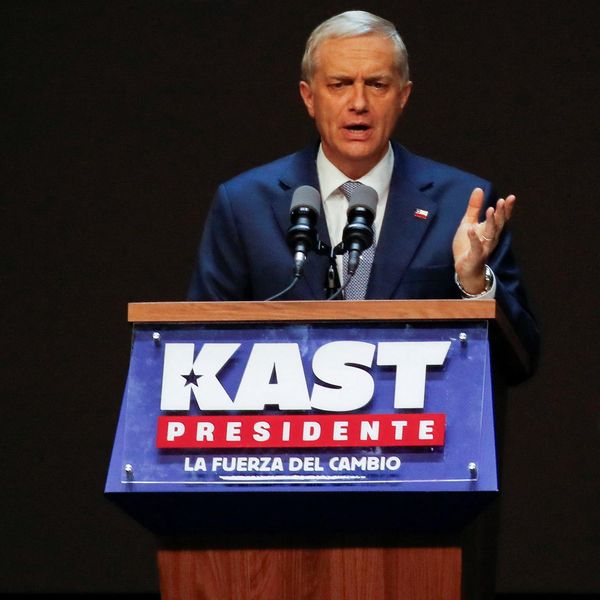That Chinese power is now peaking would seem to be beyond doubt. The conventional wisdom, of course is that China is a rising power, on course to surpass the United States economically and perhaps even militarily in the not-too-distant future. But the undeniable reality is quite the opposite.
First, China is simultaneously shrinking and growing old. The Chinese Academy of Science predicts that China’s population will peak at 1.4 billion in 2029, drop to 1.36 billion by 2050, and shrink to as few as 1.17 billion people by 2065. Ominously, if fertility continues to drop from its current rate of 1.6 children per woman to a realistic 1.3, China’s population would be reduced by about 50 percent by the turn of the next century. And the composition of that population will also change, with the country’s population growing significantly older.
This will result in a rise in the dependency rate — that is, the portion of nonworking people, including children and the elderly. This in turn will necessitate the diversion of scarce financial resources away from military spending, investment in research and development, and development projects like the Belt-and-Road Initiative and toward shoring up China’s threadbare social security system.
Second, China’s meteoric economic rise is stalling. Rather than displacing the United States and becoming the next economic superpower, China now finds itself ensnared in a classic “middle income trap” — a situation in which rapid growth and the equally rapid attainment of the status of middle-income country is followed by a period of stalled growth and failure to achieve the status of high-income country. As a result, China will not become the world’s economic middle kingdom, owning and controlling all under the heavens. Indeed, it will be lucky if it escapes the fate of countries like Brazil and South Africa that have also fallen into this economic trap.
Finally, China’s geopolitical star is fading rather than rising. Misjudging that the moment was ripe, in recent years China has attempted to assert primacy in its immediate neighborhood. Whether in the Himalayas, or the South China Sea, or the across the Indian Ocean region, China has pursued what it perceives to be its “core interests” in an increasingly muscular fashion. But this has both revealed the limits of Chinese geopolitical power and triggered a geopolitical counterbalancing reflex — Japan and India have both adopted military and diplomatic strategies intended to check China’s power grab; the US has undertaken a “strategic pivot” to the Indo-Pacific region; Australia has taken steps to enhance its ability to counter China’s conventional and “gray zone” military threats; and all four of these countries have moved in the direction of increased defense cooperation under the auspices of the newly revived Quadrilateral Security Dialogue, or Quad.
Vietnam, the Philippines, and perhaps even Russia are also now choosing counterbalancing over bandwagoning. Add to this the fact that many European, Middle Eastern, African, and Latin American countries are growing increasingly wary of China’s efforts to enhance its power and it is clear that China’s geopolitical reach has exceeded its grasp.
The onset of demographic collapse, economic decline, and geopolitical backlash have already begun to bite — so much so that there is now little chance that China will realize President Xi Jinping’s goal of moving the country “to center stage of world politics.” Nor is there much doubt that China has already begun to moderate its grand strategy accordingly. Where once it seemed as if Beijing was committed to strategy of global primacy, it now seems as if China’s leaders have settled into one of “offshore balancing with Chinese characteristics” — that is, to a strategy of primacy in the Western Pacific (its regional bastion) coupled with disrupting U.S.-favoring balances in key regions like the Persian Gulf, Europe, and even the Western Hemisphere. It is difficult, of course, to discern precisely the intentions of an opaque, authoritarian regime like China’s. But if we look at Beijing’s actually existing strategic posture, there is a strong argument to be made that — either by design or by default — China has indeed adopted just such a strategic posture.
Assuming that that is the case, the United States is now in a position of unprecedented strategic opportunity. This would not be a situation like 1940. Then, as the Quincy Institute’s Stephen Wertheim has convincingly demonstrated, the American foreign policy establishment had come to believe that the only way to ensure U.S. security in a world of primacy-seeking rivals was to forcibly establish its own primacy. The fundamental fear of that establishment was that, absent American armed supremacy, other powers — first the Nazis and then the Soviets — would eventually squeeze the United States into an increasingly smaller corner of the globe. Such a prospect, they believed, would be both economically and geopolitically untenable. In such conditions, and given the American strategic culture of the time, it was perhaps inevitable that the United States would attempt to construct a postwar order that was liberal, rule-governed, truly global, and backed by unmatched American military might. That the Cold War frustrated that effort does diminish the zeal with which it was pursued.
Nor would it be a situation like 1990, when the United States found itself the sole superpower on the world stage, finally enjoying its unipolar moment. The post-Cold War U.S. foreign policy establishment at that time saw opportunity rather than threat. Absent a superpower rival — or even a potential rival — many in Washington reasoned, provided the opportunity to complete the construction of the global liberal international order that their forebears had dreamt of during the war, but that had not survived the outbreak of the Cold War.
In these conditions, and given the neoliberal euphoria of the moment, it was perhaps inevitable that the United States would pursue a strategy of liberal empire, attempting once again to make the liberal international order truly global in scope, but this time facing little opposition. Consistent with the vision of their forebears, many in the post-Cold War foreign policy establishment believed that American military primacy was a necessary condition for the success of this project. For while the Soviet dragon had been slain, a number of snakes continued to plague the international order — and American military might was needed to ensure that these snakes did not seriously disrupt that order.
Rather, if we assume that peak China has begun to adopt some form of offshore balancing strategy, then the current geopolitical situation is truly unprecedented. The fears that animated U.S. foreign policy in the 1940s — that absent U.S. armed primacy the United States would be subject to another power’s armed primacy — will no longer have even a plausible basis in reality. In this scenario, the only other contender for global hegemony, China, will have neither the ability to challenge the United States nor the strategic will to do so.
Similarly, the sense of boundless opportunity that seized the foreign policy establishment in the 1990s has largely evanesced as illiberalism in its many guises has emerged around the globe, perhaps even in the United States itself. In such a world, the project of restoring the liberal international order to its half-remembered, half-imagined glory days seems something of a forlorn hope.
In short, a world in which peak China has been forced to adopt a strategy of restraint would be a world in which, perhaps for the first time, an American strategy of offshore balancing would be possible. If we accept, for argument’s sake that, in the past, the presence of primacy-seeking hostile powers — Nazi, Soviet and then, for a brief moment, Chinese communist — rendered a strategy of offshore balancing unrealistic, the absence of such powers in the present necessarily makes such a strategy eminently realistic.
















